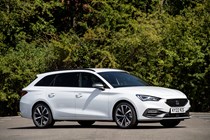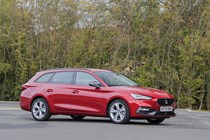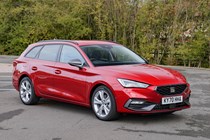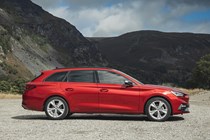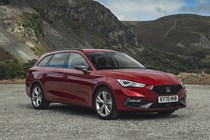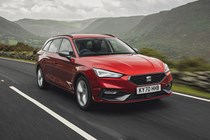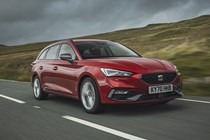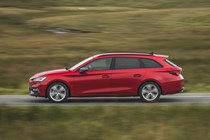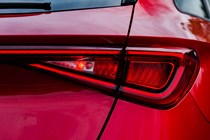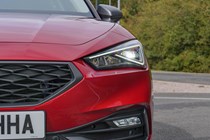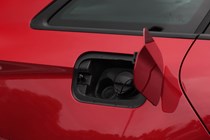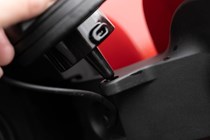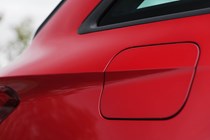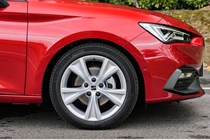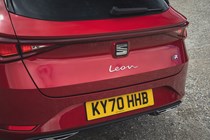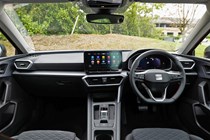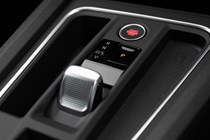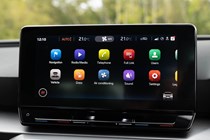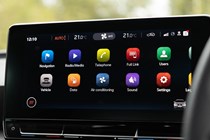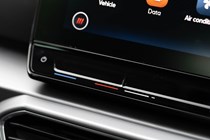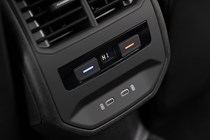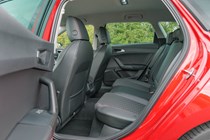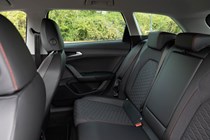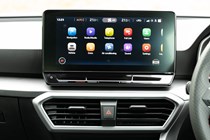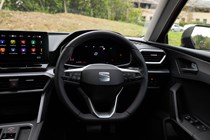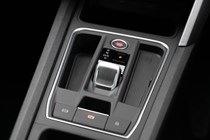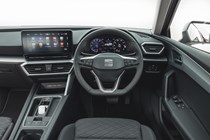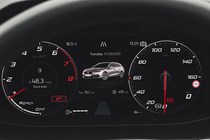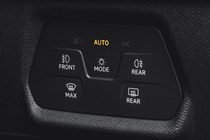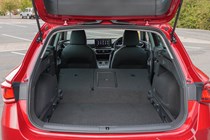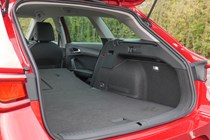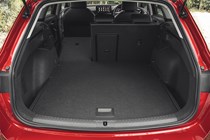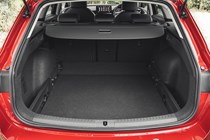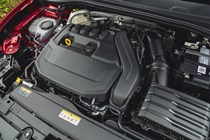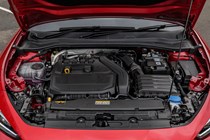
SEAT Leon Estate engines, drive and performance

- Three petrols and one diesel
- Plug-in and mild hybrid also available
- Performance almost identical to hatchback Leon
Petrol engines
We found the entry-level 1.0-litre petrol engine adequate for those who often travel alone, which means it might get a bit out of its depth in an Estate full of heavy paving slabs, for example.
Better is the 1.5-litre, four-cylinder unit, and this is definitely the sweet spot in the range. We drove the higher-powered 150hp version and found it to be smooth with plenty of acceleration and it’s more refined than the smaller petrol or larger diesel. Most impressively, it balances excellent on-road performance with great real-world economy, which you can read about in the ownership costs section of this review.
Both 1.0- and 1.5-litre units are also available as an eTSI mild hybrid, mated exclusively to a DSG auto ‘box, these utilise a 48-volt starter-generator so you can coast along with the petrol engine off in some circumstances.
Diesel engine
The load-lugging nature of the Leon Estate suits a punchy and fuel-efficient diesel but this choice has fallen out of favour and so, like the hatchback, there’s a single unit to choose from.
We’ve driven the five-door car, and enjoyed it, even if it’s not as smooth or quiet as the petrol options. The TDI is easy to live with and feels punchier accelerating than its performance figures would suggest.
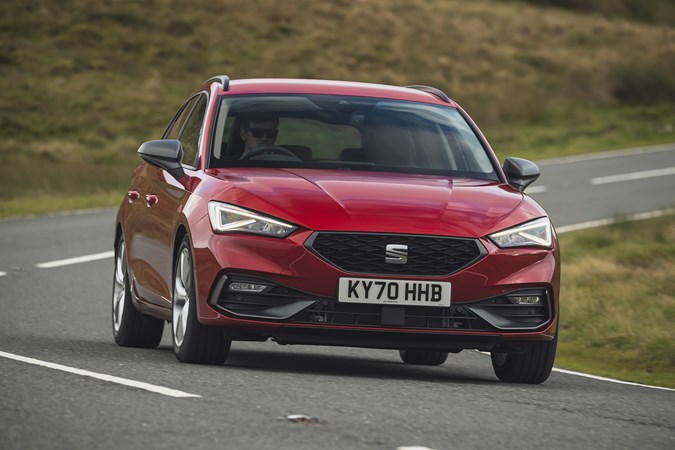
Electric and hybrid engines
The Leon Estate e-Hybrid combines a 1.4-litre petrol engine and a 75kW electric motor. In the hatch this powertrain promised all things to all people, with plenty of overtaking grunt and a 40-odd mile electric range too.
In many ways it makes more sense in the Estate because although the boot capacity is still impacted, it’s larger anyway so you can still carry bulky items with ease.
What’s it like to drive?
- Safe and secure handling
- Slightly sharper than Skoda Octavia
- Ford Focus still more fun
Among its VW Group rivals (the Golf, Skoda Octavia and Audi A3) the SEAT Leon has long been considered the sportier model, despite all four cars being based on the same underpinnings. In reality the Leon trades on broadly the same confidence inspiring grip as its in-house rivals and feels pretty similar to the Golf and A3, however, the Spanish car does feels more agile than the Skoda Octavia, even if that gap is closer than ever these days.
That said, an across-the-board tweak of the platform that the Leon sits on has brought it closer in terms of driving enjoyment to our favourite fun hatchbacks, the Ford Focus and Mazda 3. We don’t think there’s a huge difference between the hatchback and the estate, despite the extra bodywork over the rear wheels. It turns into corners neatly and the steering has a nice weight to it, while the firmer FR-spec suspension keeps the car from rolling around, albeit at the slight expense of outright comfort.
In the dry we had no concerns about traction levels, and even in a downpour the front wheels held the surface tenaciously, although the more sophisticated traction control system debuted on this model had to work comparatively harder.



